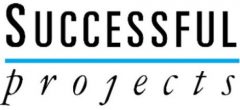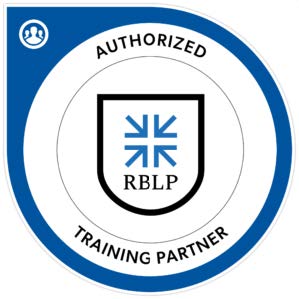Building and Leading Resilient Teams Training Program
The ability to build and lead resilient teams has never been more important.
Collective resilience is the team’s ability to overcome adversity, and then adapt and grow together because of that adversity. Resilient teams are the key to both individual and organizational resilience. Resilient teams are stronger together and they make learning and change possible.
This training program provides the knowledge and skills required to build and lead resilient teams in organizations of any size, in any industry.
Who should enroll?
This training program is specifically designed to accommodate both new and seasoned supervisors, managers, and senior leaders. People that aspire to a leadership role may also participate.
How is the training program delivered?
- Seven learning modules requiring 6 hours of student preparation and 3 contact hours of instructor-led live group discussion, or 1 contact hour of one-on-one live training per module.
- Individual student preparation includes reading assignments, watching relevant videos, and answering reflection questions.
- Training sessions ensure a thorough understanding of applicable factual (what), conceptual (why), and procedural (how) knowledge.
- Training sessions leverage your unique leader/follower experience and perspectives.
What will you learn to do?
- Raise morale in the workplace by creating a positive climate for people to work in.
- Boost teamwork by developing cohesion among team members.
- Improve employee motivation and commitment by providing purpose in the workplace.
- Increase the team’s ability to solve problems and overcome challenges by facilitating team learning.
- Enhance the organization’s ability to change and compete by supporting organizational learning.
What is your total time investment?
- The training program requires 49-63 hours (42 prep hours/7-21 training hours) of your time.
- Training program cost is $1,350 (contact us for group pricing).
Meet Your Instructors
Students that complete this certificate program will be prepared to sit for one of the Resilience-Building Leadership Professional (RBLP) series of certification exams. If you are interested in sitting for a certification exam, please apply here.
Visit www.resiliencebuildingleader.com for experience requirements, education/training requirements, and exam cost. The RBLP series of certification exams are administered by the Resilience-Building Leader Program only. Completing this program does not guarantee a passing score on any certification exam administered by Resilience-Building Leader Program.
“RBLP”, “Resilience-Building Leadership Professional”, “Learn More. Lead Better.”, and the RBLP shield logo are trademarks of the
Resilience-Building Leader Program, Inc.
Building and Leading Resilient Teams
Download this data sheet to share with your manager, team or someone you think would benefit from this highly valuable training
Competencies
Create a Positive Climate
When morale is low, performance suffers. When morale is high, performance can soar. Climate is about the shared perceptions and attitudes of teammates. Your team’s climate can change quickly, for better or worse, based on your actions and the actions of teammates. You will be taught how to raise your team’s morale by creating a positive climate for people to work in. The result will be more flexibility, creativity, and openness to new ideas. Positive emotions help people cope with stress. Teams that work in a positive climate are better able to bounce back from adversity, and then adapt and grow together because of that adversity.
Some of the key considerations for creating a positive climate include:
People are more willing to accept the influence of leaders that they trust.
- People trust leaders that are authentic and have integrity.
- People are more willing to take creative risks when they trust their leaders.
- When leaders treat people with respect, it improves job satisfaction, engagement, and productivity.
- Leaders are being respectful when they value the opinions of team members.
- Being fair, consistent, and inclusive is a show of respect.
- Leaders set the example for accountability by showing people “what right looks like”.
- When people learn from their mistakes, they are being accountable.
- Having fun at work fosters collaboration and creativity.
- Having fun at work helps people relax and take a mental break from challenges.
- A leader’s character will make or break their reputation.
- Moral courage, empathy, humility, and honesty are essential for building and leading resilient teams.
- Managing expectations helps people maintain a sense of control in the face of adversity.
- Being mentally prepared for the unexpected enables proactive coping.
Develop Cohesion
The best measure of a team is how well it performs under pressure. When the going gets tough, the tough get going… by working together as a team. This maxim holds true for front-line teams, executive teams, and all other teams in between, including yours. You will be taught how to boost teamwork by developing the cohesion of your team. The result will be more supportive and dependable relationships. Developing cohesion enhances well-being, reduces stress, and enables your team’s creativity and collective decision-making. Cohesive teams in the workplace are better able to bounce back from adversity, and then adapt and grow together because of that adversity.
Some of the key considerations for developing cohesion include:
- Working in teams fosters cooperation and collaboration.
- Innovation is usually the product of teamwork.
- Leaders don’t just lead teams; they are part of the team.
- Leaders must stay keenly attuned to any loss of trust between team members.
- When team members trust each other, they are more likely to share creative ideas.
- Trusting in team members is the foundation of psychological safety.
- Leaders should be on the lookout for disrespectful treatment between team members.
- Addressing instances of disrespectful treatment quickly is essential.
- Leaders show genuine concern by getting to know their people.
- People will not give 100% to a leader that does not care about them.
- When the going gets tough, leaders need to show up.
- People need leaders that can stay calm during stressful situations.
- When things go wrong, team members need an outlet to vent their stress.
- Talking about setbacks with the team is an opportunity for learning.
Provide Purpose
When your people have a sense of purpose for the work that they do, they are more motivated and committed. You will be taught how to provide purpose in the workplace by challenging people to be their best. Most people are looking to grow personally and professionally. You should challenge each person on your team to learn new skills. You should challenge the team to learn new collective skills together. You can also provide purpose by helping your team understand how their work supports the organization’s mission. When people have a sense of purpose at work, they are better able to bounce back from adversity, and then adapt and grow together because of that adversity.
Some of the key considerations for providing purpose include:
- Leaders should establish individual learning goals for themselves and their teams.
- Learning increases self-efficacy and self-determination.
- Constructive feedback from leaders encourages better performance and more learning.
- Learning from mistakes is critical.
- Team training develops the coordination, collaboration, and communication skills.
- Training the team builds shared mental models and collective efficacy.
- Delegating responsibility provides opportunities for personal and professional growth.
- Delegating responsibility is an essential component of leader development.
- Empower decision-making fosters initiative to solve problems.
- Empowering decision-making increases autonomy and feelings of control.
- Focusing on the mission can turn adversity into an opportunity for innovation.
- Being mission-focused encourages aggressive problem-solving and action.
- Keeping the team informed provides opportunities for two-way communication.
- Open and honest communication helps overcome resistance to change.
Facilitate Team Learning
When people work together as a team, they create shared experiences that they can learn from. As you grow in your role as a leader, you will be expected to facilitate this experiential learning process. Learning is how teams solve problems and overcome challenges. When a team bounces back from adversity, learning is how they adapt and grow together. Learning makes the team more resilient. You will be taught how to initiate the learning process by ensuring that your team is constantly reflecting on its past and present experiences to assess performance and find ways to improve. As your team develops new ideas for improvement and change, you will need to approve and prioritize those ideas. Most importantly, it’s your responsibility to make sure these ideas get put into action, tested, and validated. Some ideas will work; some will not. Either way, team learning has occurred.
Some of the key considerations for facilitating team learning include:
- Experiential learning is the creation of knowledge through the transformation of experience.
- Team learning is the foundation of organizational learning.
- Orienting on team goals that are challenging inspires better performance.
- Accomplishing team goals requires team members to identify and harness the abilities of others.
- Accomplishing team goals improves collective efficacy.
- Positive climate and high morale sustain progress toward accomplishing team goals.
- As teams gain confidence and competence, they tend to set higher goals.
- Constructive dialogue allows teams to confront problems and challenges from multiple viewpoints.
- Constructive dialogue uncovers tacit knowledge and enables shared decision-making.
- Constructive dialogue is only possible is a psychological safe environment.
- Psychological safety enables teammates to be creative, take risks, and propose new ideas without fear.
- Psychological safety allows teammates to ask questions, admit mistakes, and call out others’ mistakes.
- Cohesion and teamwork enable constructive dialogue.
- Shared mental models enable better team coordination, cooperation, and communication.
- Learning and change require people and teams to discard old mental models and build new ones.
- Entrenched mental models are often resistant to change and can make learning difficult.
- Motivation and commitment sustain progress toward building new mental models.
- Double-loop learning is about surfacing, challenging, and ultimately changing existing mental models.
Support Organizational Learning
Organizations that cannot learn are doomed to repeat the same mistakes. You will be taught that to compete over time, organizations must be willing and able to learn and to change. In fact, without learning, there can be no change. This is true for individuals, teams, and organizations. And just like individuals and teams, when an organization bounces back from adversity, learning is how it adapts and grows. Learning makes the organization more resilient. In a learning organization, leaders at all levels have significant roles to play.
Some of the key considerations for supporting team learning include:
- A good vision describes what the organization wants to be in the future.
- When senior leaders promote an aspirational vision, it provides context for new ideas.
- Having a shared vision helps to create a sense of common identity and purpose.
- Organizations realize their visions by building a good culture and executing on sound strategy.
- Learning organizations execute strategy better because they are continually improving and innovating.
- Leaders in learning organizations should challenge the status quo.
- Leaders must remove obstacles that prevent knowledge from emerging in an organization.
- New ideas for improvement and innovation often emerge from the bottom-up in organizations.
- When more people have a voice in the process, the ideas that emerge will be better informed and creative.
- Teams that solve problems and overcome challenges are a source of new knowledge in organizations.
- Both knowledge exploitation and knowledge exploration are essential for organizational learning.
- Knowledge catalysts are usually subject-matter-experts and not always in positions of leadership.
- Knowledge catalysts typically recognize problems and challenges before others do.
- Knowledge diffusion ensures that new knowledge is shared across the organization.
- Organizations have learned when new ideas are codified into policies, practices, and culture.
- Knowledge networks are essential for knowledge diffusion.
- Knowledge networks are collections of individuals and teams that share knowledge across organizational boundaries.
- Communities of practice can be effective and efficient knowledge networks.
- Leaders must enable the lines of communication that make knowledge networks possible.


